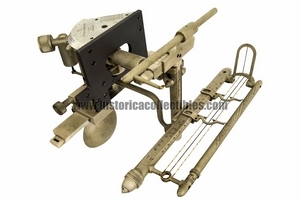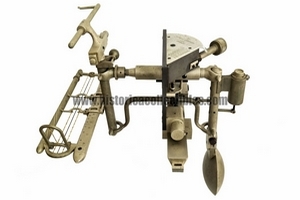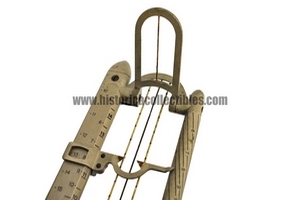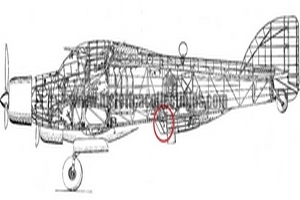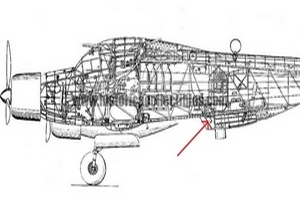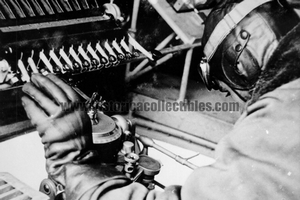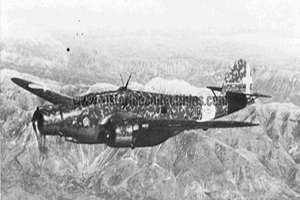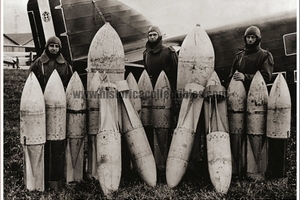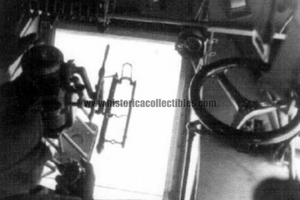Traguardo Jozza U2, Salmoiraghi Milano, Savoia Marchetti 79 Italian Royal Air Force, 1939
Traguardo Jozza U2, produced by Salmoiraghi Milano, complete with its "open pendulum" compensation base preserved in its original wooden transport case, on which there are two plates, one identifying the finish line, the other showing the military serial number "MM 20675", which after careful research turns out to be related to a Savoia-Marchetti 79 bomber, produced by SIAI, between October 1936 and January 1937 in an order of 24 examples, which ranged from "MM 20663" to "MM 20686".
This complex aiming system was installed on the Savoia-Marchetti 79 bomber aircraft, and was operated manually by an operator (observer/pointer) using graduated scales and cursors with micrometric adjustment.
Once the target was sighted, the pilot of the aircraft provided the pointer with measurements taken from the on-board instruments such as (aircraft speed, altitude, wind direction, etc. etc.) to be inserted into the pointing instrument and once the target was centered, the operator could, using a special device (keyboard), release the bombs.
The acronym U2 refers to the number of operators employed (pilot and pointer) who necessarily had to cross-reference the information dictated by the instrumentation, in order to obtain a "release" as precise as possible.
This aiming target complete with its original compensation base, as well as its transport case, appears to date to be the only known specimens known.
The storage conditions and the functioning of all its mechanisms are perfect.
Salmoiraghi was a company resulting from the experience that Angelo Salmoiraghi acquired, after graduating from the Polytechnic of Milan, in Philotechnics, founded in 1865, under the guidance of the founder Ignazio Porro. In Philotechnics, Eng. Salmoiraghi held positions of manager until acquiring ownership in 1873, transforming the name into "Salmoiraghi, Rizzi e C.“ for the production of optical and topographical instruments.
In 1877 the company dissolved and Angelo Salmoiraghi continued the business alone with a new company called "Filotecnica Salmoiraghi". At the end of the century he had excellent collaborations: above all, that of Francesco Koritska, improving the offer of optical and precision instruments. Under his guidance, the company developed considerably, to the point of acquiring a leading role among the producers of optical and precision instruments for the Regia Aeronautica and the Regia Marina.

